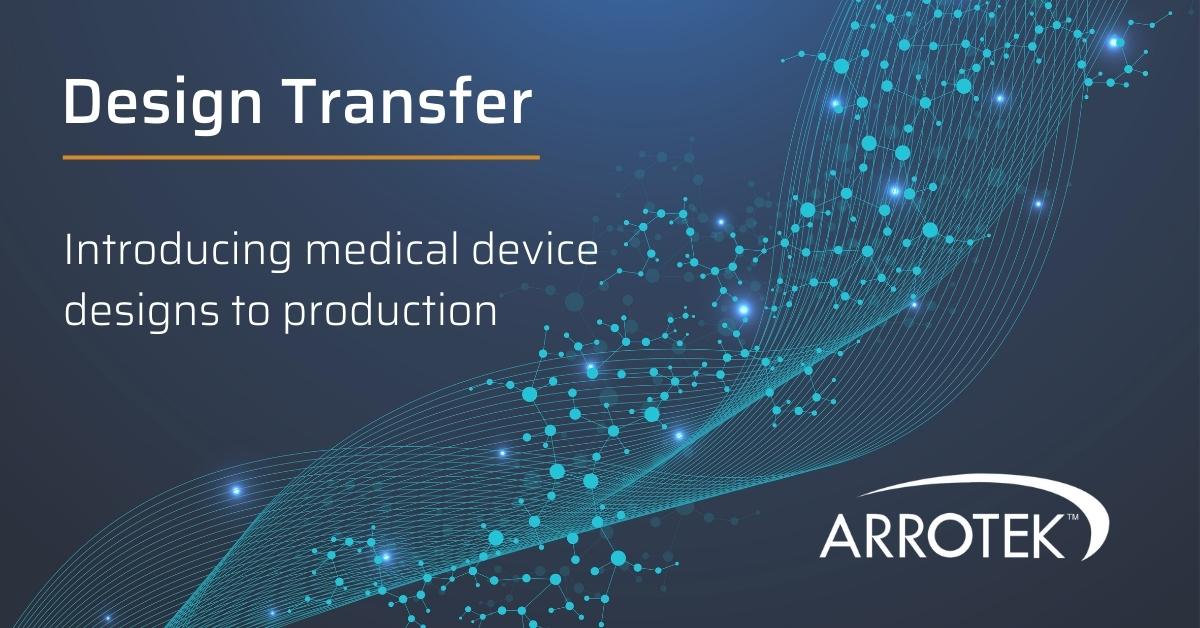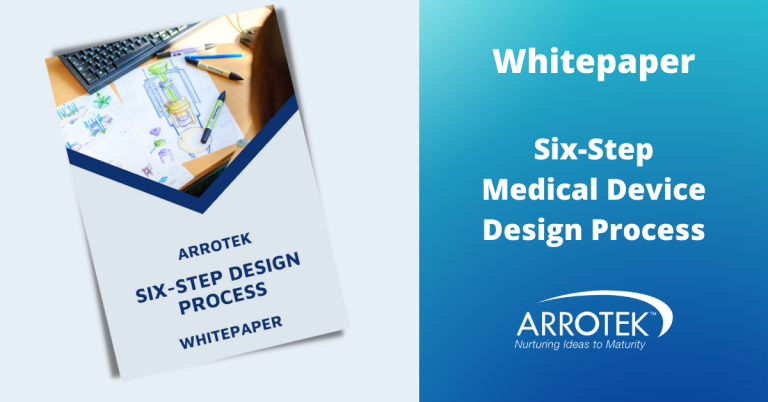Design transfer is a phrase that describes the activities and processes that introduce a medical device design to production. Effective design transfer is required by regulators but it also keeps manufacturing costs under control and ensures production milestones and deadlines are met. Furthermore, effective design transfer can reduce time to market and improve product quality.
What is involved in the design transfer process and what are the requirements? At Arrotek, we have a Three-Phase Design Transfer process to prepare a design for commercial manufacturing. The final phase involves a comprehensive checklist that is important for the process itself as well as becoming a crucial component of the Device Master Record.
The Design Transfer Requirements of Regulators
Design transfer is covered by the FDA in FDA Quality System Regulation (21 CFR 820.30(h)):
“Each manufacturer shall establish and maintain procedures to ensure that the device design is correctly translated into production specifications.”
That’s it. It’s short and succinct but it is also clear as to what the FDA wants. It doesn’t describe what manufacturers should do in detail, but the expectations are clear.
In ISO 13485:2016, design transfer is covered in section 7.3.8. While providing a bit more detail than the FDA regulations, the basic principles are the same:
“The organization shall document procedures for transfer of design and development outputs to manufacturing. These procedures shall ensure that design and development outputs are verified as suitable for manufacturing before becoming final production specifications and that production capability can meet product requirements. Results and conclusions of the transfer shall be recorded.”
As for the EU, design transfer is not specifically mentioned in the EU’s MDR as it is covered by the definition in ISO 13485.
Essential Components of an Effective Design Transfer Process
- Good practice is to use a design transfer checklist to ensure all activities related to the transfer have been successfully completed and documented.
- The design transfer process should start as early as possible in the design phase, as the product’s manufacturability should be continuously considered. This is known as design for manufacturing, or DFM.
- Furthermore, process validation is closely linked to design transfer, so both should be progressed and documented at the same time.
- All activities related to the design transfer process should be fully documented.
Arrotek’s Three-Phase Design Transfer Process
Phase One
Phase One of our design transfer process involves the manufacturing of products for non-clinical use under semi-QA (quality assurance) controlled conditions. This phase is typically for Stage 1 prototypes that are used to assess and refine the product’s design.
Phase Two
Phase two involves the production of products for clinical use or validation purposes. Therefore, products manufactured in Phase Two of our design transfer process are fully QA controlled. Stage 2 prototypes are manufactured during Phase Two of the design transfer process.
Phase Three
Phase Three represents the final stage in the design transfer process at the end of which the product will be fully transferred to the production team for commercial manufacturing as a Type One product.
This part of the design process includes a formal meeting between the engineering, production, and quality teams to conduct a full review. A central component of this review is our design transfer checklist.
At Arrotek, we have two versions of the design transfer checklist – one for products designed elsewhere, and one for products designed by us at Arrotek.
Examples of the items on our design transfer checklists include:
- Process validation complete?
- Risk management activities complete?
- Statutory and regulatory requirements fulfilled?
Our Three-Phase Design Transfer process is well-established and has been successfully used to facilitate the launch of production runs for a range of medical device products.
Get in Touch to Find Out More
To find out more about our design transfer process and to get full details of what we cover in our design transfer checklist, please complete the contact form below.





